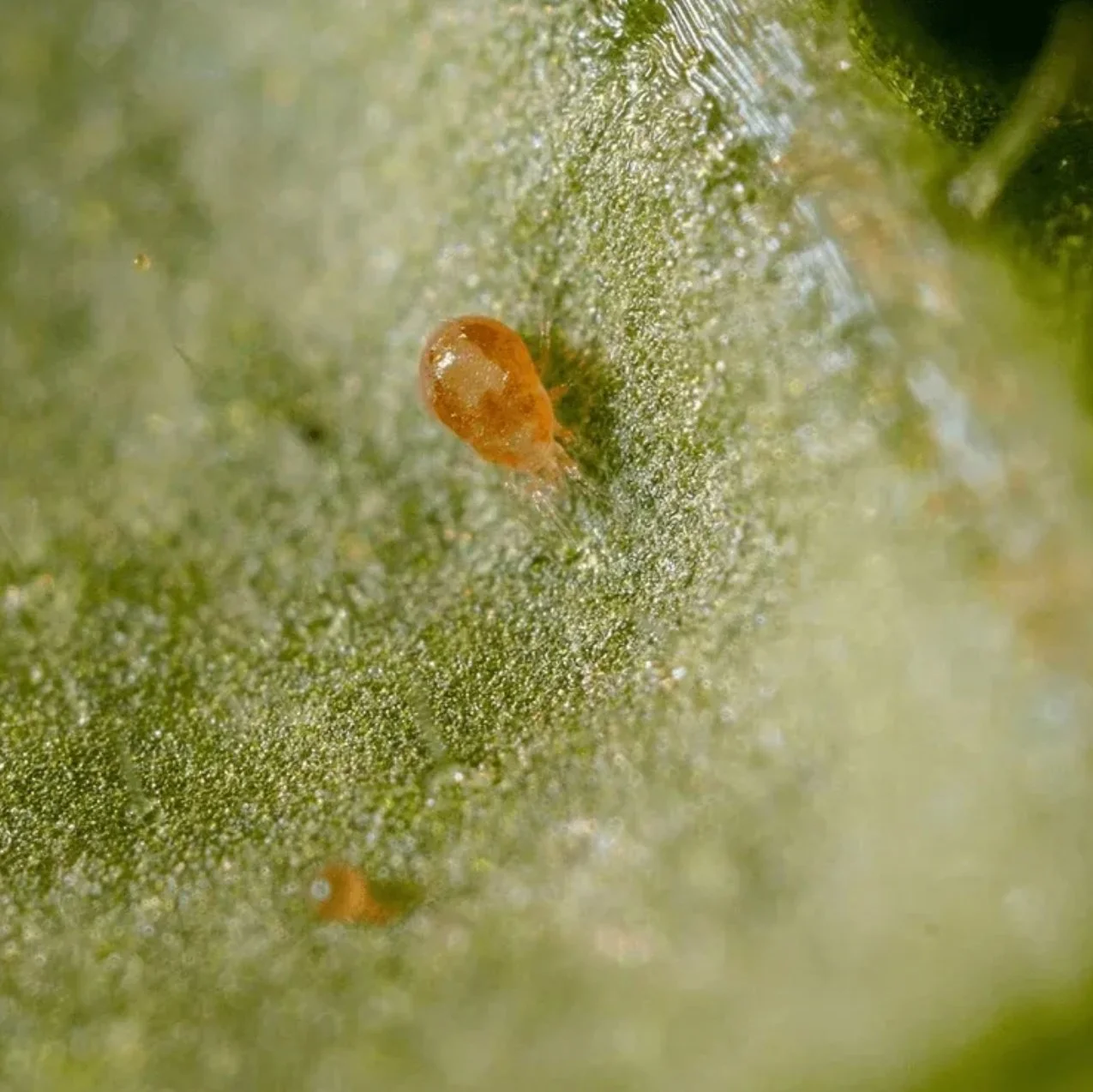
Beneficials for Greenhouses and Indoor Tropicals
Phytoseiulus persimilis
-
Phytoseiulus persimilis is a highly effective predatory mite known for targeting webbing spider mites. Recognized by their red bodies and long front legs, they can consume up to 35 spider mites daily while laying 4-7 eggs. They are ideal for targeting "hot spots" in crops with high spider mite infestations. These small, red predators complete their life cycle in about a week, from eggs to larvae to adults, effectively managing spider mite populations at all life stages.
-
Two-Spotted Spider Mites, Carmine Red Mites, Pacific Mites, & many other pest mite species.
Amblyseius andersoni
-
Amblyseius andersoni mites are adaptable predators that control various pest mites in both indoor and outdoor environments. They thrive in different temperatures and humidity levels, making them effective in diverse conditions. Females lay eggs beneath leaves near mite infestations, which hatch in 2-3 days. The larvae grow through two nymphal stages before becoming adults, with each adult living for about 30 days.
-
Two-Spotted Spider Mites, Carmine Mites, Lewis Mites, Banks Grass Mites, Broad Mites, Cyclamen Mites, Russet/Gall/Rust Mites, European/Citrus Red Mites, Rust Mites, & many other pest mite species. Also targets Thrips larvae.
Neoseiulus californicus
-
Neoseiulus californicus are small, buff to tan predatory mites known for their effectiveness against two-spotted spider mites. They thrive in high temperatures and humidity and can survive on pollen when pests are scarce. Females lay translucent eggs beneath leaves, which hatch in 2-4 days. The larvae progress through two nymphal stages, eventually targeting larger spider mites. Adult mites live about 20 days and consume spider mites at all life stages.
-
Two-Spotted Spider Mites, Persea “Avocado” Mites, Carmine Mites, Lewis Mites, Banks Grass Mite, Broad Mites, Cyclamen Mites, European/Citrus Red Mites, Russet Mites, & many other pest mite species.
Amblyseius cucumeris
-
Amblyseius cucumeris are versatile predatory mites that control various pest mites in both indoor and outdoor settings. They tolerate different temperatures and humidity levels well. Females lay transparent eggs beneath leaves near pests, which hatch into larvae in 2-3 days. The larvae develop through two nymphal stages, gradually targeting larger pests until adulthood. Adult cucumeris live for about 30 days, during which they consume significant numbers of thrips and continue reproducing.
-
Larval stage of various Thrips including Western Flower Thrips, Flower or Eastern Thrips, Onion Thrips, Greenhouse Thrips, Melon Thrips, and more. Also feeds on Two-Spotted Spider Mites, Cyclamen Mites, Tomato Russet Mites, Broad Mites, Russet Hemp Mites, and various other mite species.
Amblyseius swirskii
-
Amblyseius swirskii are generalist predatory mites that target pests like thrips, whiteflies, and spider mites. These small, beige or tan mites, about 0.5mm long, have short legs and sensory hairs. They reproduce quickly, making them effective for pest control. Females lay eggs on leaves near pests, which hatch in 2-3 days into larvae that feed on pest eggs and larvae. After progressing through two nymphal stages, they mature into adult predatory mites.
-
Greenhouse Whitefly, Certain Thrips Larvae spp., and Tobacco Whitefly. Also targets Broad Mites, Tarsonemid Mites, Cyclamen Mites, Two-Spotted Spider Mites, & many other pest mite species.
Hypoaspis miles
-
Hypoaspis miles are native predatory mites that live in soil and help control underground pests. These small, brown to tan mites thrive in various environments, including greenhouses and container plants. Female mites lay up to 60 eggs in the soil, which hatch into larvae within 1-2 days. The larvae feed on pests and develop into adults in about 5-7 days. The entire life cycle from egg to adult takes around 14 days, with adults continuing to manage pests for 3-6 weeks.
-
Fungus Gnats, Thrips, Some Shore Flies, mites, Root Mealybugs, Springtails, Poultry Mites, Snake Mites, Bulb Mites, & many other pest species.





